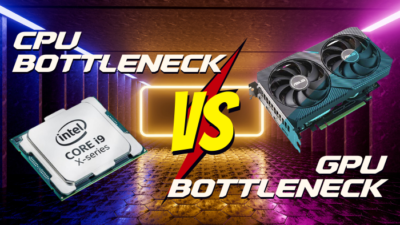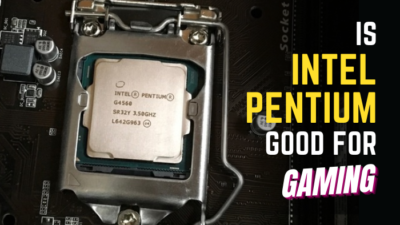As the CPUs are made from silicon, it produces a lot of heat as a byproduct. Ensuring a proper cooling system is crucial to preserve the lifespan & get the best out of a chip.
For tech enthusiasts, it is pretty common to spend petty cash on the best available product. But what if you bought a pricey liquid cooler, and don’t understand whether it’s working or not?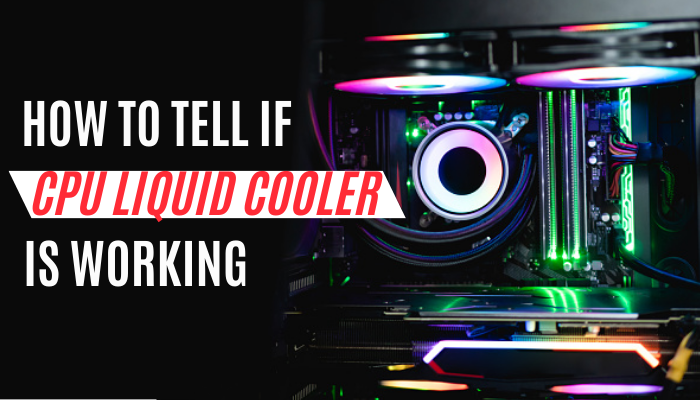 Fear not. In this article, I will show some quick ways to find out about a liquid cooler’s status. Let’s dive in.
Fear not. In this article, I will show some quick ways to find out about a liquid cooler’s status. Let’s dive in.
What is Liquid Cooling & its Types?
Liquid cooling AKA water cooling uses fluid to transfer the heat away from the CPU components silently.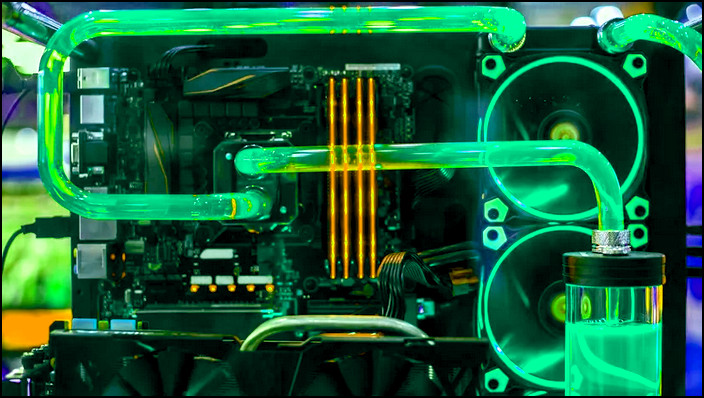 When the processor generates heat, the cooler circulates the liquid through the heatsink attached to the chip. Then it transmits the hot fluid to the radiator, which dissipates the heat outside & comes back to the processor as a cold liquid & continues the circulation.
When the processor generates heat, the cooler circulates the liquid through the heatsink attached to the chip. Then it transmits the hot fluid to the radiator, which dissipates the heat outside & comes back to the processor as a cold liquid & continues the circulation.
There are usually 3 types of water cooling; AIO, water cooling kits & custom liquid loops.
An All-In-One cooler, also known as AIO, is a closed-loop cooler that is the most common among liquid coolers. It’s very easy to install, cheap & less risky for leakage. Water cooling kits are a bit more complex than AIO, but it offers an easy installation for beginners than custom loops. Lastly, the custom loop offers more customization but is very complex to install & maintain.
How to Tell if CPU Water Cooler is Working Properly?
Random PC freezes, BSOD, performance fluctuation, high temp during normal load, etc. indicates a lack of a proper cooling system. When the cooler is not functioning properly, the chip will reach critical temp in a short time & cause a system crash or no boot.
While for an air cooler, it’s easy to check its status, a water cooler needs some extra steps to verify its workflow due to some additional equipment such as a radiator, pump, coolant, etc.
In a water cooler, a pump is the most important component that helps to circulate the fluid. Without the flow, the cooler doesn’t even work. That’s why to check if a water cooler is working properly, the main focus is to find out a pump’s functionality by checking the pump’s RPM.
Here are the 5 ways how to tell if your CPU water cooler is working:
1. Verify the Pump’s Status
As you already know, the pump’s work is to mobilize the coolant through the tubes. If it fails to distribute the fluid to the radiator, the intent of the liquid cooler flops. Always keep track of the pump.
So, understand how to tell if the CPU liquid cooler is working properly. Then check the pump’s condition and monitor the pump’s RPM or manually examine the pump.
To check the pump’s condition, you can monitor the pump’s RPM or manually examine the pump. To monitor the RPM through software, connecting the pump cable to the motherboard’s fan header is a must. Or else, connecting through PSU’s Molex connector will not let you monitor the pump speed.
Checking the pump’s RPM: You can check the pump speed in bios or on Windows. I have an X570 Aorus Extreme motherboard. Usually, I check the pump fan speed in BIOS. I will walk you through my mobo as a reference to check the pump RPM in BIOS.
Here are the steps to verify pump speed in BIOS:
- Press the designated key by your manufacturer to go into BIOS during boot. For example, it’s the DEL key for me.
- Hit the F6 key to go to the Smart Fan page.
From that page, you will find the “System fan pump” which will show the value of the pump speed. Match the speed with the product’s claimed speed. If it matches, then the pump is ok. If the value shows 0 or N/A, then something is wrong with the pump.
You can also view a glimpse of all fan speeds in the bottom section of Aorus Easy Mode.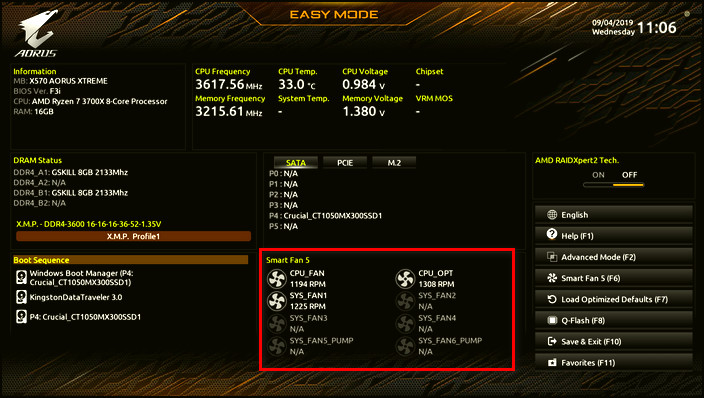
Alternatively, using 3rd-party software like HWiNFO64 to monitor the speed on Windows is another great option. It is a popular software for monitoring various items including voltages, temperatures, power consumption, etc.
Follow the steps below to find out the pump fan speed with the software:
- Download & open the software with Sensors-only.
- Scroll down & find the Motherboard section, where you will find PUMPFAN.
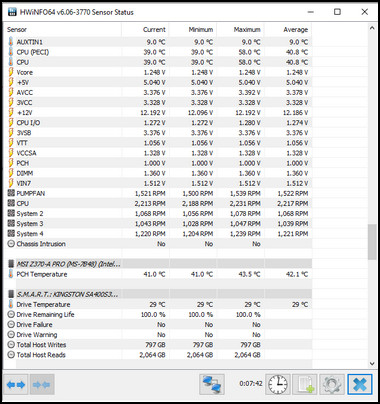
Examine the pump manually: As the pump circulates the liquid, during operation we need to check whether it’s working or not.
Here are the steps to manually inspect the pump:
- Shut down the PC & open the side panel of the casing.
- Find the Pump.
- Reboot the computer & touch the pump.
If the pump vibrates or any bubble sound comes out, then the pump is ok. Otherwise, it’s not functioning.
2. Monitor CPU Temperature
Failure of the cooling system will increase the CPU temp to a critical level. This overheating indicates that the cooler is not doing its job & can’t scatter away the heat. This is an easy way to tell how the cooler is performing.
Using BIOS mode or third-party apps, you can easily check CPU temperature. Also, the MSI Afterburner program lets you monitor CPU temperature while gaming.
Here are the steps to find out processor temp by HWiNFO:
- Download & open the software with Sensors-only.
- Find the Motherboard section.
There you will find various temperatures. Find the CPU temp & keep tracking. If it is reasonable under load, then the liquid cooler is ok & functioning.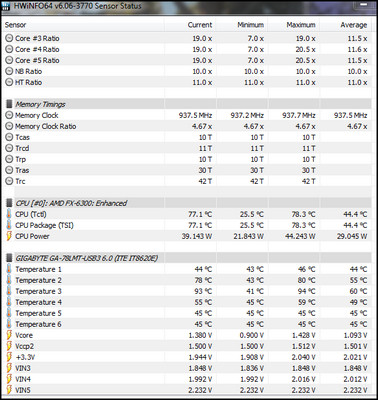
3. Ensure the Reservoir’s Fluid Level
Maintaining the proper fluid level is necessary to operate the cooler appropriately. If the level is low, then the cooler will be unable to cool down the CPU.
Follow the procedure to check the Reservoir’s coolant level:
- Open the side panel of the casing.
- Find the reservoir. It is usually a cylindrical shaped pot connected to the CPU through pipes.
- Fill the reservoir with the proper coolant, if the level is too low.
Take necessary steps to avoid spilling water on the other parts of the computer.
4. Examine Thermal Paste
If your PC is aged, then chances are you didn’t change the thermal paste. Thermal paste is necessary to maintain contact with the CPU & help the cooler to spread the heat properly from the chip.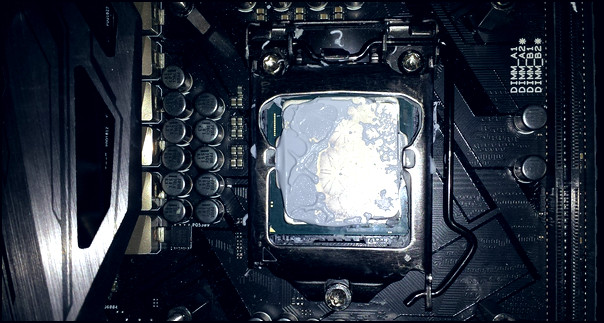
As thermal paste has some lifespan, due to quality, overheating & continuous usage, it gets dried up over time. So, you need to reapply the thermal paste after a certain time to maintain thermal conductivity.
Otherwise, no cooler will scatter away the heat properly due to air capped in the middle of the CPU & heat sink. After repasting the thermal paste, if the temp does not drop, then the cooler might not work.
5. Inspect for Any Leakage
Coolant leakage is the biggest risk of a liquid cooling system. If the pipe doesn’t fit tightly with the processor, it may leak fluid, which will damage various components.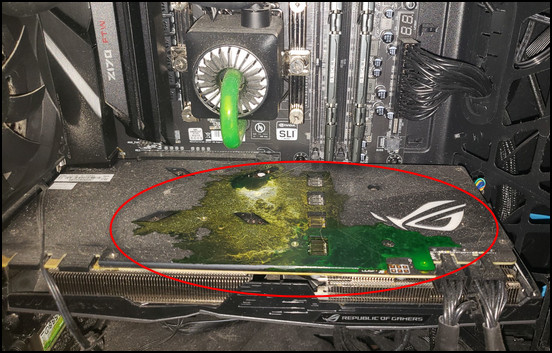
Here are the ways to check for leaks:
- Open the casing.
- Fill the reservoir with the coolant if the level is low.
- Start the computer.
- Look for any liquid coming out through any joints.
If you detect any leaks, immediately turn off the PC. Take the full cooling system out of the casing. Reassemble the liquid cooler again and make sure the pipes are tightened enough.
As of now, you know how to identify whether a water cooler is working or not & where the possible problem is. To get a solution, read along.
How to Fix When CPU Liquid Cooler is Not Working
The liquid cooler can not work properly for a failure of the pump, low reservoir, or liquid leakage. So if we find out if the water cooler is malfunctioning, we have to try to restore it.
Here are the steps to fix if the pump is not working:
- Disassemble the liquid cooler & take it outside from the casing.
- Drain water after removing the pump from the radiator.
- Unscrew the screws from the back side of the pump.
- Pull out the heat sink carefully & remove the plastic cover.
- Clean the fan & pipes properly & reassemble all the parts again accordingly.
If there is no water leakage, then install the liquid cooler in the casing properly again & test the cooler. If there is any leakage, completely replace the pipe with a new one if it is a plastic pipe. Besides these, if the reservoir fluid level gets low, renew the fluid at a proper level.
Also, make sure the CPU cooler is seated properly and that the cooler is installed the right way.
Now, even after doing some fixing & cleaning, don’t you get the expected cooling performance? Then it’s better to know how long a liquid cooler can give you service. That’s just right ahead.
How Long Does Liquid Cooling Last?
From the previous part, where I mentioned the types of liquid cooling, you already know that AIO is very easy to install. That being said, it becomes a popular choice for its longevity alongside the easy installation.
A good quality All-In-One water cooler can survive about 4 to 6 years. A long time, right?
However, a custom loop only lasts for 1 to 3 years without maintenance. The reason for a short lifespan is, the custom loop usually requires servicing after around 6 months. The coolant requires to be flushed out & cleaned. It is not an installation & forget-type system like an air cooler. If the maintenance can be maintained, it can serve you for a longer period.
What is the Difference Between Liquid & Air Cooling?
So if an aesthetic custom liquid cooler lasts only 1 to 3 years without servicing, why choose it over air cooling? What’s the benefit or drawback?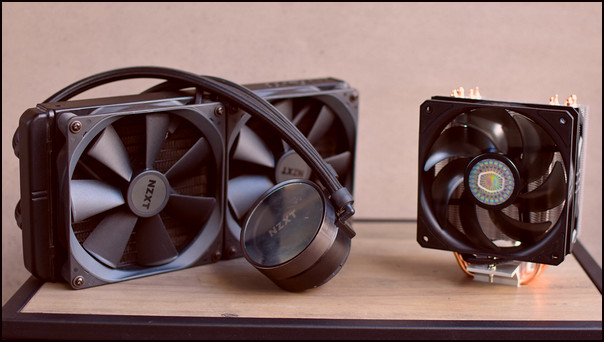
Here are some factors between liquid & air coolers that differentiate their positions:
- Price: Usually for a mid-range PC, an air cooler is more efficient due to its low price. Whereas for top-tier components, it’s recommended to get a pricey liquid cooler.
- Overclocking headroom: With an air cooler, you can push the chip at a certain level & have to stop for the thermal throttle. The liquid cooling system increases the headroom of OC & lets you squeeze more from the chip.
- Space: A Mid-tower air cooler is compact, whereas a tower-sized air cooler takes up a lot of space & can create an issue for clearance with the casing or RAM. The water cooler is more compact from this side.
- Aesthetic view: Most air coolers are built on a simple design with one or two heat sinks & fans. But a custom loop creates an elegant view of your rig. Usually, this artistic view is not visible from the air cooler.
After these considerations, if you want to use liquid coolers, here’s a list of the 12 best AIO CPU coolers you can buy in 2023.
FAQs
Can I run a CPU without a Cooler?
The system will not boot to the system if it doesn’t detect a CPU fan. Even if it boots, it will immediately shut down due to the safeguard mechanism of the processor to prevent burning the chip.
When to change thermal paste for a liquid cooler?
Depending on the quality of the paste, max temp status & usage of a PC, usually, the thermal paste can last up to three years for a liquid cooler. But you need to clean the paste with isopropyl alcohol & repaste whenever removing the heat sink.
Do I need a Liquid Cooler for a locked CPU?
If the CPU is not unlocked, or you don’t want to OC, a stock cooler is fine. However, a cheap after-cooler is recommended for longevity. For mild overclocking, AIO is considered to be good. Whereas, for extreme OC, liquid cooling is preferable to push to the chip’s limit.
Final Thought
For an air cooler, it can be the thermal paste, the fan, or some dust inside the heat sink that can hamper its performance. But, identifying the functionality of a liquid cooler is a bit complex.
As a liquid cooler consists of a pump, radiator, pipes, fans, etc. it can stop working if any of these malfunctions.
In this article, I covered how you can identify whether a water cooler is working & how to get a quick fix. If you have any further queries, don’t hesitate to come back & leave a comment.


